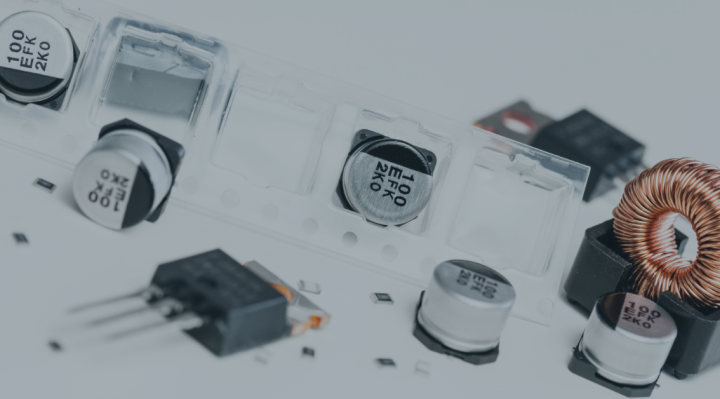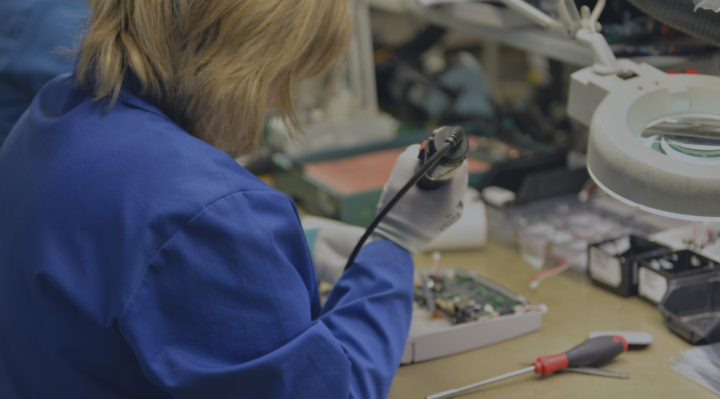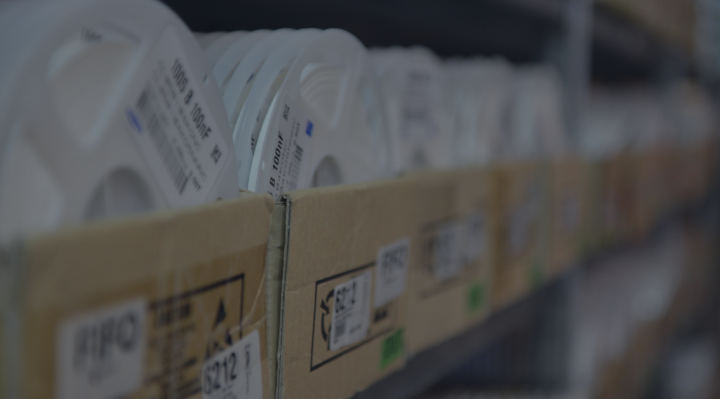Supply chains have been severely affected by the current geopolitical situation. Sourcing components has become much more difficult - and in some cases, almost impossible. Suspicious substitutes, i.e. counterfeits or used components sold by unauthorised sources as new originals, are therefore increasingly appearing on the market. An increasingly relevant issue is how to protect against this type of supply. How can you manage this? You will find valuable tips below.
How to identify suspect components?
There are several simple approaches to obtaining used components: removing them from stolen electronics or waste recycling. Components sourced in this fashion are then sandblasted or acid-washed to get rid of the old markings. Finally, with the help of modern digital printing techniques, they are given new markings in order to sell them as high-quality, new, original components from well-known manufacturers. Such components are called counterfeit components. This group includes obsolete components and parts recovered from scrap assemblies and resold as new ones.
Can counterfeit materials be identified? The answer is yes, in several ways.
• The quickest is a visual inspection. It is worth comparing supplied items to the originals held in the company to verify the supply chain in question. This is because counterfeit markings often feature errors in codes or part numbers. Date marking may also differ from the originally used system. Logos are also not easy to counterfeit and should be thoroughly examined.
• Detailed analysis enables the detection of well-prepared counterfeits with proper markings. However, the destruction of old markings often results in a difference in the size, appearance or thickness of the components.
• Use of the blacktopping service allows the surface to be renewed and the genuine, factory-applied markings to be reproduced.
• Counterfeit components, sourced from an unverified supply chain, may have poorly made contacts that will not fit perfectly with the original parts. This is also an important tip.
• An X-ray inspection of the components to assess the matrix inside: its size or delamination.
• Testing of delivered components enables a final confirmation of their manufacturing quality.
The individual methods can be used either in combination or separately. By means of a quick visual inspection, a large number of components from new supplies can be checked. Whereas only a small sample of the received batch of components is subject to testing.
How to avoid counterfeit components?
For the purpose of keeping suspicious components out of production lines, it is sufficient to comply with a few important rules. These mainly concern the establishment and management of the supply chain at your company.
Purchases can be best made only from authorised sources. Only brokers with a high reputation and trust throughout the market should be cooperated with. It is advisable if you already have experience with such entities and can continue to cooperate with them.
Irrespective of the source, you should always check the supplies you receive. Effective management of the supply chain will be possible by creating a reference database. Include supplier data and information on the batches of components supplied. If you have already received ten batches that have been 100% checked from which company and none of them contained suspicious material, the next time you receive a supply, you can check only a part of the components. However, finding even one counterfeit component should result in a full 100% check of the next few dozen batches, and repeated issues should result in the termination of the contract.
This rating of brokers will enable faster checking of deliveries while maintaining a high level of security.
How a professional EMS provider does it?
How suspicious components are identified by a professional EMS provider?
• Purchases from unauthorised sources are only made with the express consent of the client. However, because of the high risk, such brokers are most often abandoned altogether in order to ensure the high quality of the batches of parts supplied.
• Markings of components (for compliance with the client's specifications) should be checked each time. This is a fairly simple procedure, which is why it is carried out even with proven and reliable suppliers.
• Components supplied are also very often checked for appearance and any defects. This not only verifies the authentic origin of the electronics but also the workmanship of the batch.
• A certain number of elements are compared with original samples. In the absence of such, historical images from the AOI are used. This type of comparison is particularly relevant when supplying from unauthorised sources and when establishing new supply chains.
• Whenever the least doubt arises - it must not be ignored! An experienced EMS knows that it is better to check a hundred good components unnecessarily than to let one bad one pass. Therefore, in case of suspicion, an X-ray or assembly test is performed immediately
• The first delivery in a given supply chain is always checked 100%. This refers even to the most reputable brokers. Enhanced inspection also applies to several consecutive batches of elements - as time passes, more and more of the examinations and tests performed are slowly eliminated.
In this manner, a professional EMS provider ensures excellent supply control, so that only genuine, high-quality components enter Your production lines.






